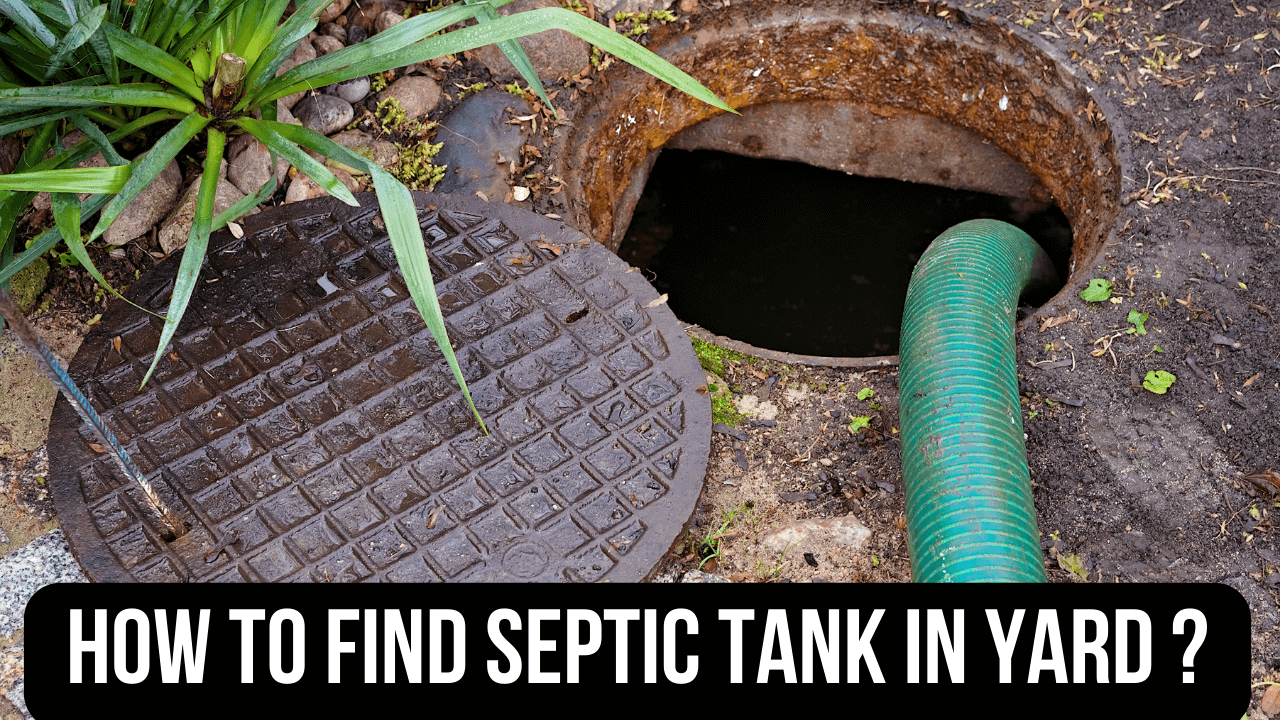You may assume that keeping track of something as huge as a septic tank on your property is simple, but if your septic tank lid is buried underground, as many are, it may be more challenging than you think. You may not be aware of the location of the lids in some circumstances, particularly if you are not the home’s original owner.
Knowing where your septic tank is located, on the other hand, can help you plan routine sewer line cleanouts and maintenance. Continue reading to learn how to locate your septic tank. But first, it’s important to grasp what a septic tank and septic system are and why knowing where yours is located is important.
Table of Contents
1) Locate Septic Tank With A Map
The simplest way is often to use a map. The installation of septic tanks at all addresses is usually recorded in most counties. These maps should include illustrations of the tank’s specific placement on the land, as well as dimensions so you can measure and locate it.
Remember that landmarks might vary with time depending on when the tank is put. So, don’t rule out a location just because of a few more plants or a tree nearby. Whether you can’t find a map or other paperwork indicating the location of your septic tank, there are a few places to look to see if one is available.
Your local health department is one of them. Check with your town or county to see whether they have a property survey map. The location of a septic tank may be found on a survey map.
2) Sewer Lines Can Lead To Your Septic Tank Location
To locate the buried sewer line and septic tank, get a soil probe to stick into the earth. Locate the main sewer line that connects to your septic tank in your basement or crawl area. Locate a four-inch-diameter pipe leading away from your home.
Remember where your sewer pipe is located and where it exits your home to locate it outside. Your septic tank will be reached through the sewer pipes. To locate and trace sewage lines, insert the tiny metal probe into the soil every two feet.
Septic tanks must be at least five feet away from the house in most states. As a result, you may need to dig a little deeper before reaching the tank.
3) Inspect Yard Yourself
Septic tanks are placed in such a way that they are barely noticeable. It can be difficult to detect the visual indications that indicate where your septic tank was constructed after time has gone, and the grass has grown. However, this does not rule out the possibility of finding septic tank hints.
It’s time to start looking for hints to your tank’s position once you’ve found out where it won’t be. As you stroll around your property, keep a lookout for any odd high or low locations that could suggest an underground tank.
You can keep an eye out for the septic lid when inspecting your property. With your metal soil probe, you should be able to locate the septic tank lid. Typically, these are at or near ground level. If you’re still having trouble discovering your septic system, ask your neighbors where their septic tank is located on their land.
4) Call Health Department To Check Country Building Records
Contact them to see if your local health department has a property survey map and a septic tank map. You might be surprised to learn that there are various options to learn about your property without ever leaving your home.
Building permits, which may include illustrations with dimensions on how far away a septic tank should be and what size it should be, are frequently found in county documents. When you bought the house, your home inspection may have included a diagram of your septic system.
If you have access to your home’s as-built drawing, pay attention to the tank’s relative orientations and the distance between the tank and the house’s side. Remember, landmarks may change over time depending on when the tank was installed.
5) Find Out Septic Tanks Lids
The number of lids for your septic tank will be indicated on an as-built plan. Depending on the configuration of your septic tank, you may have two or three lids. The shape of a septic tank is usually rectangular.
Septic tank components, including the lid, are usually buried underground in most circumstances. You can detect its edges and mark the circumference using a metal probe. If you can’t discover the lid by probing, a short dig along the tank’s perimeter with a shovel should disclose it.
Hire Professionals To Fix Septic Tank Issues
Professionals should handle septic tank difficulties. Contact professionals when you’ve found the septic tank. As a result, they will undertake routine maintenance and assess any problems. If you open the septic tank lid, toxic vapors might create major health problems.
Falling into an open sewage tank can be dangerous and perhaps fatal. While knowing where to look for your septic tank is helpful, it’s also important to be aware of the health concerns associated with doing so.
Bottom Line
Maintenance of a septic system is rarely a do-it-yourself project. Hire a professional business if you need your septic tank drained or cleaned or if you want to replace your tank. You can also call professionals for help if you’ve tried to locate your septic tank on your own and are unsure of its position.
Make a note of the exact location of your tank so you can locate it later. In windy conditions, it should be hefty enough not to fly away. You should draw out a septic tank map if you didn’t get one when you bought the house.
You’ll have it for future reference and will locate the exact place quickly. If you ever sell the house, you can pass it on to the next owner.





